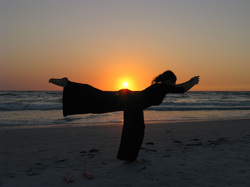If you are wanting to use anchors - either from this page, or another page, you would create a link using HTML code:
Then, rather than turning the rest of the page into code, just insert a small Embed Code element with the coding gf the anchor on it. In this case, it is only for the word Yoga, which follows.
Next, create the rest of the page with the standard text and image elements. That way you do not need to worry about the image pathways. (i didn't know which picture you had used, so simply added a yoga picture.)
When you need another anchor, pull in another Embed Code element, and only add the coding for the anchor.
Next, create the rest of the page with the standard text and image elements. That way you do not need to worry about the image pathways. (i didn't know which picture you had used, so simply added a yoga picture.)
When you need another anchor, pull in another Embed Code element, and only add the coding for the anchor.

With a history that spans thousands of years, yoga is a time-tested system for self development that puts you in touch with your true nature. It increases your sense of awareness and can inject a quality of aliveness into your daily life. Among the more popular yoga practices are movement, breathing and relaxation techniques. These techniques influence many levels: On the physical level they create strength, flexibility and stamina, stretching and toning muscles and joints, massaging and regulating the functions of internal organs and glands. Yoga practices are also beneficial on the mental level, helping you to become more aware and attuned, not only to the physical, but to the whole body-mind connection. With regular practice, you move beyond conditioned response and enhance the objectivity needed to find creative solutions to life's puzzles. On the spiritual level, the practice of yoga encourages an understanding of our connection to the whole of life and can restore us to a place of balance and harmony, both internal and in the context of our environment